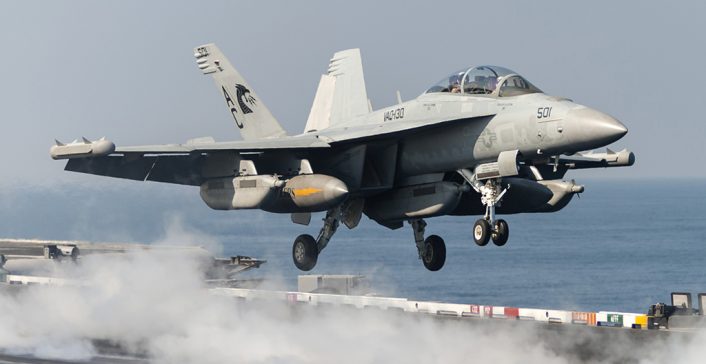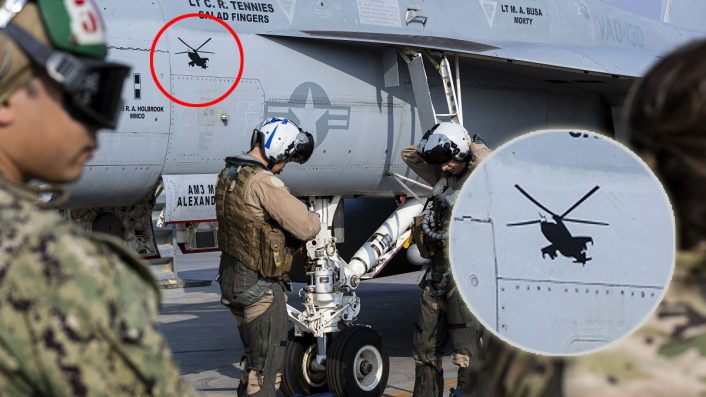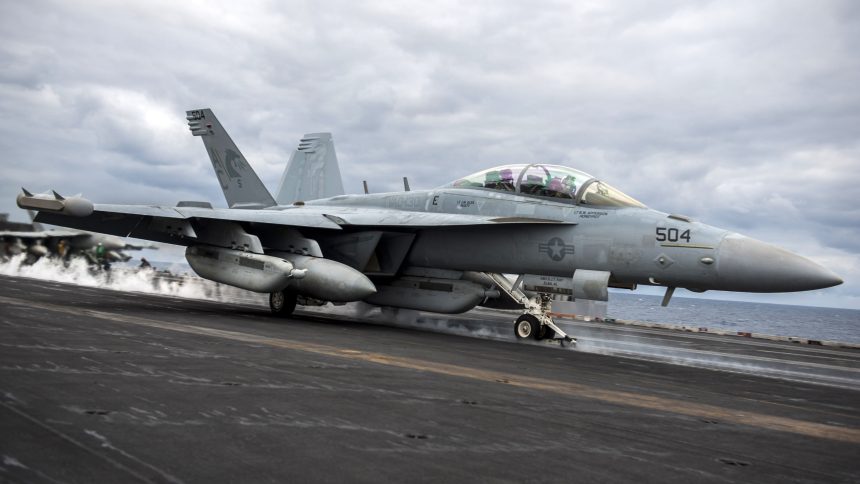The EA-18G Growler belonging to VAQ-130 crashed on October 15, 2024 during a training flight.
An EA-18G Growler Electronic Attack aircraft belonging to the Electronic Attack Squadron 130 (VAQ-130) “Zappers” carrying two crew members crashed near Washington’s Mount Rainier on Tuesday, October 15, 2024 at 3:23 p.m. local time. Neither crew member has been located. The aircraft wreckage was located in the mountainous region by search teams on Wednesday, October 16.
“Aerial search crews located the wreckage at about 12:30 p.m.” the Navy said in a statement from spokesman Mike Welding. Welding went on to report the crash site was, “on a mountainside east of Mount Rainier”.
The search for the missing crew members is ongoing. Diana Stancy of The Navy Times reported that, ““Multiple search and rescue assets, including a U.S. Navy MH-60S helicopter, launched from NAS Whidbey Island to locate the crew and examine the crash site,” the Navy said in a statement. “As of 7 p.m. on Oct. 15, the status of the two crew members remains unknown.”
A comprehensive (though not exclusive) list of probable SAR air traffic east of Mt. Rainier.
The list of aircraft involved in the search include a Dept of Homeland Security SNC Scorpion ISR, A US Navy P-3 Orion and P-8A Poseidon, a UH-60L and possibly two fighters from NASWI. pic.twitter.com/4Z8Lie8y5N
— Evergreen Intel (@vcdgf555) October 16, 2024
The EA-18G Growler belonged to Electronic Attack Squadron 130 (VAQ-130), the “Zappers”, based at Naval Air Station Whidbey Island in Island County, Washington. The base where the aircraft’s unit is stationed is approximately 160 miles north of Mount Rainier, although the origin of the aircraft’s mission was not verified in early media reports.
Washington’s Mount Rainier, near Seattle, Washington, is the second highest and has the most glaciers of any mountain in lower 48 states. The mountain, inside Mount Rainier National Park, is 14,411 ft. tall with almost the entire area over 11,000 ft. above the tree line. Because of its altitude and proximity to the Pacific Ocean, mountain guides at Rainier Mountaineering Inc. told TheAviationist.com that, “The mountain makes its own weather”.
Several low level routes run through national parks in the Cascade Mountains, including VR1355, colloquially called the “million dollar ride” for both the scenic views and the fun and “aggressive” flying that can be done through the valleys.
A statement on the official Mount Rainier National Park website said that, “The road to Paradise [at approx. 10,000 ft.] will close beyond Longmire today [October 16] at 4pm in preparation for anticipated overnight snows on the mountain. All vehicles which wish to leave the Paradise area must leave by 4pm.” While weather conditions at the time of the crash are unknown, current weather forecasts could influence search and rescue efforts in the region.
Another Boeing F/A-18 Hornet variant, a Spanish Air Force “EF-18M” (“E” for “Espana” or “Spain”) crashed near Peralejos in the province of Teruel, in eastern Spain earlier this month on Friday, October 4, 2024, killing Spanish Air Force Officer Lieutenant Colonel Pablo Estrada Martín. TheAviationist reported that, “The 49-year-old officer, highly regarded within the Ejército del Aire y el Espacio, was unable to eject from the EF-18M”
EA-18G Growler
The EA-18G Growler is a specialized variant of the F/A-18F Super Hornet designed for electronic warfare. It first flew in 2006 and entered operational service as an electronic warfare attack aircraft three years later in 2009. The twin engine aircraft has a crew of two, one pilot and one electronic warfare officer, and operates from aircraft carriers and land bases. EA-18G Growlers are in service with the Royal Australian Air Force in addition to the U.S. Navy.
One of the key differences from the standard Super Hornet is the presence of wingtip pods housing the ALQ-218 system, which detects and locates enemy signals and emitters.
The ALQ-218 is an advanced radar warning receiver and electronic surveillance system that gathers data on sources of radio frequency emissions. This capability allows the Growler to identify and track hostile signals, contributing to the Electronic Order of Battle (EOB) in active combat environments.
The Growler’s electronic attack capabilities are built around an avionics suite derived from the EA-6B Prowler’s Improved Capability III (ICAP III) system. Future upgrades, including the Block II Growler enhancements and the Next Generation Jammer (NGJ) pods, will enable the EA-18G to perform cyber attacks by hacking or injecting malware into enemy networks.

VAQ-130 Zappers
Electronic Attack Squadron 130 (VAQ-130), the “Zappers”, the 65-year-old unit that Tuesday’s accident aircraft belongs to, is the oldest electronic attack squadron in the U.S. Navy. During its history beginning in 1959, the unit has flown the Douglas EA-1F Skyraider single, piston engine propeller aircraft, the large twin jet engine Douglas EKA-3B Skywarrior, the four-seat, twin-engine Grumman EA-6B Prowler and now operates the EA-18G Growler.
The squadron recently returned from a nine-month deployment in the Red Sea aboard the USS Dwight D. Eisenhower during which it took part in the fight against the Houthi rebels. During the eventful cruise, an EA-18G of the “Zappers” used an AGM-88E AARGM to destroy a Mi-24/Mi-35 Hind attack helicopter on the ground; an achievement celebrated by VAQ-130 adorning the Growler with a kill mark.










